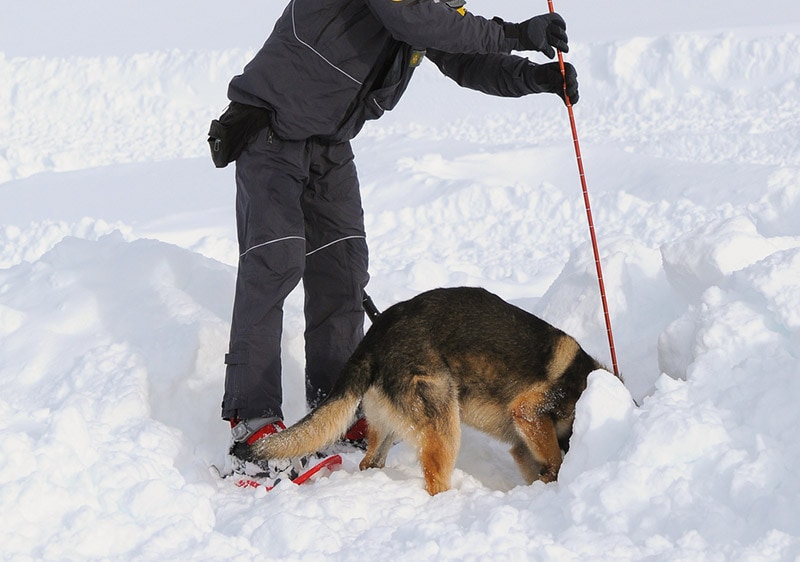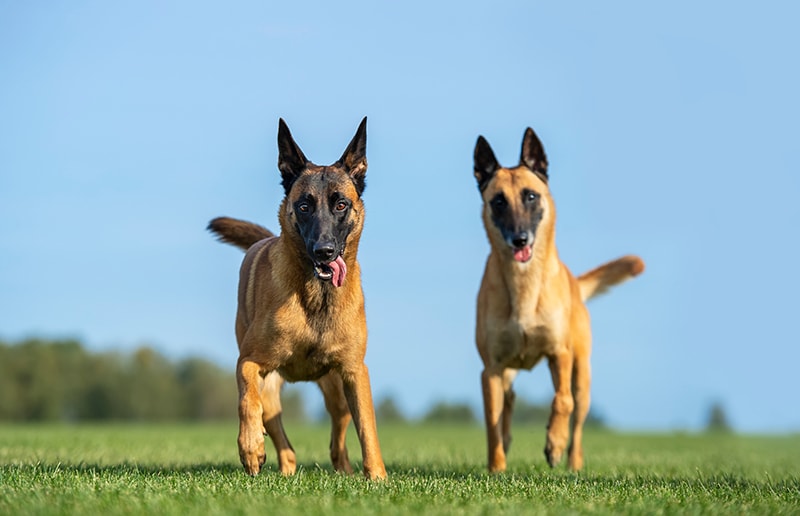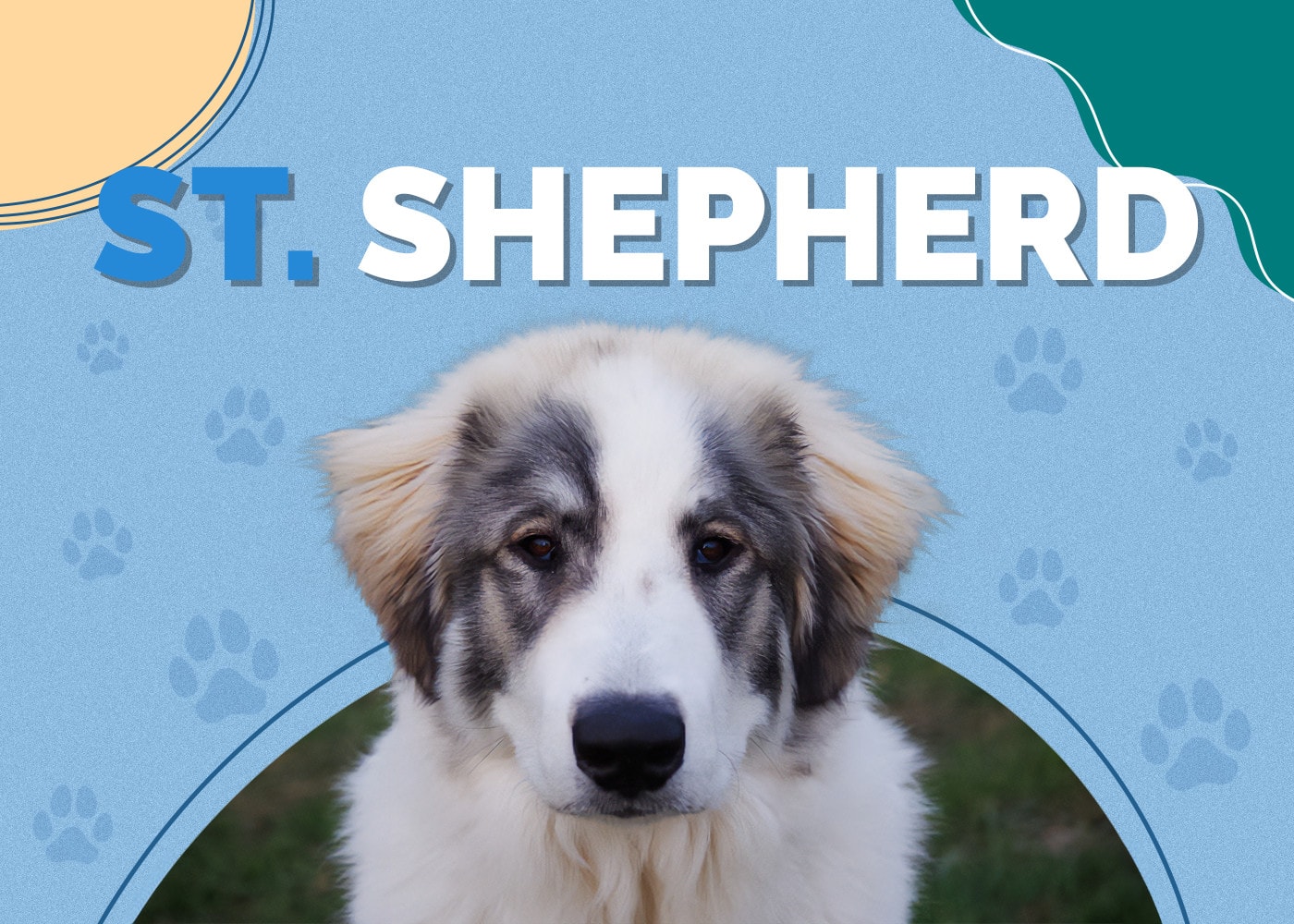English vs. Neapolitan Mastiff: The Key Differences (With Pictures)
Updated on
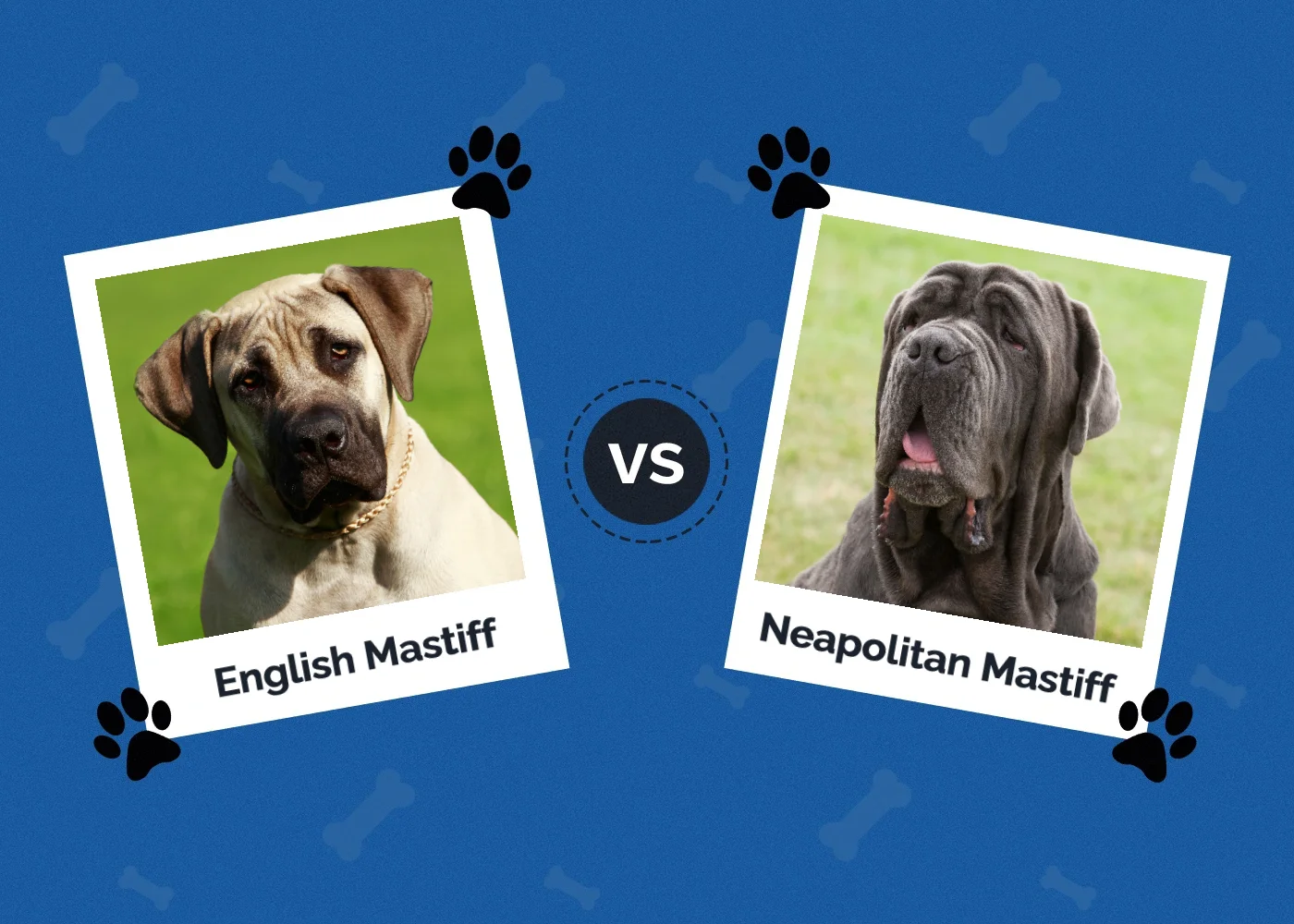
Click to Skip Ahead
Are you looking for a giant dog breed to be a part of your family? The English Mastiff and the Neapolitan Mastiff are great options to consider. Both are considered “gentle giants” due to their mild nature and are loyal and affectionate when it comes to their family members. So, either can make an ideal pet for certain households.
However, while there are many similarities between the English Mastiff and the Neapolitan Mastiff, there are also a few differences that should be considered. This guide has information about both breeds so you can compare the two before deciding which breed is the right one for you.
Visual Differences

At a Glance
- Average height (adult): 28–36 inches
- Average weight (adult): 120–240 pounds
- Lifespan: 6–10 years
- Exercise: 1+ hours a day
- Grooming needs: Moderate
- Family-friendly: Yes
- Other pet-friendly: Often
- Trainability: Easy to moderate
- Average height (adult): 23–30 inches
- Average weight (adult): 110–150+ pounds
- Lifespan: 8–12 years
- Exercise: 30+ minutes a day
- Grooming needs: Moderate
- Family-friendly: Yes
- Other pet-friendly: Often
- Trainability: Moderate to hard
English Mastiff Overview
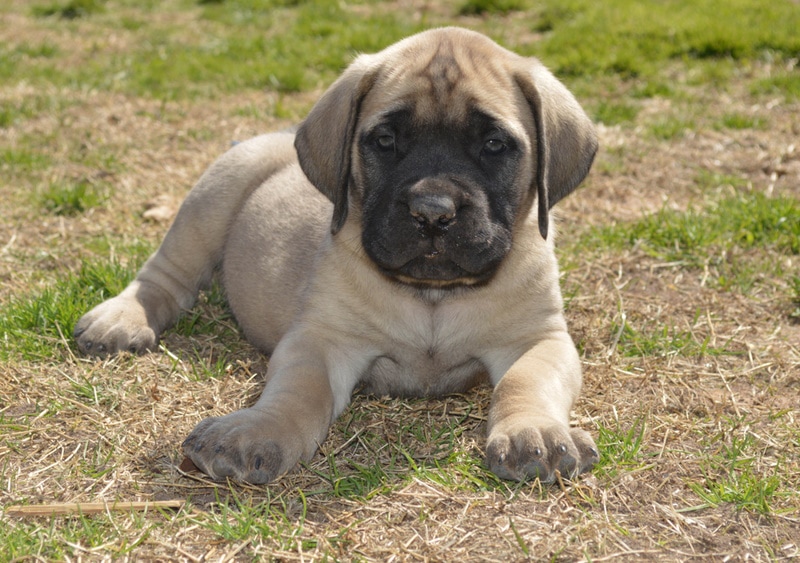
The English Mastiff is a massive dog, one of the largest in the world. This muscley breed has a broad head, a thick neck, and a hefty triangular body with a short coat that comes in either brindle, apricot, or fawn-striped patterns. Their wrinkled forehead and black mask can give them somewhat of a formidable look.
Personality / Character
English Mastiffs are known for being loving, loyal dogs that enjoy spending time with their human companions. Despite their large size, they like to cuddle and sometimes try hard to get into a person’s lap—even though they usually aren’t successful! These patient dogs love to go on adventures outdoors. They are protective of their family members, which makes them great watchdogs. They must be socialized as puppies to get along well in social settings.
Exercise
In general, an English Mastiff requires about 1 hour of exercise each day to stay happy and healthy throughout their life. Due to their size, physical activity can be hard on their bones. Therefore, exercise should come in the form of moderately brisk walks broken up into two or more sessions, games of fetch in the yard, swimming in pools or at lakes or beaches, and playful trips to the dog park.

Training
English Mastiff training is crucial because the breed is so large and can be overpowering, even if unintentionally. They have a natural instinct to guard their territory and companions, so without training, this can create dangerous situations in social settings. But these dogs are not mean. They are gentle dogs that like to please their human companions, which means training can be extremely effective.
Training should start during puppyhood and continue throughout the dog’s life. English Mastiffs do not respond well to negative reinforcements, so training should be a positive experience filled with attention, treats, and verbal praise. Mastiffs tend to enjoy things like banana slices and dog biscuits as rewards.
Grooming
English Mastiffs have short double coats, so they require a moderate amount of grooming. Using a slicker brush on the dog’s coat two or three times a week will help keep shedding to a minimum and encourage healthy skin. Bathing should take place once every couple of weeks to help keep oil from building up on the skin. They should get enough outdoor exercise so their nails stay naturally trimmed. If possible, their teeth should be brushed daily. Alternatively, dental treats can be offered per the package instructions.
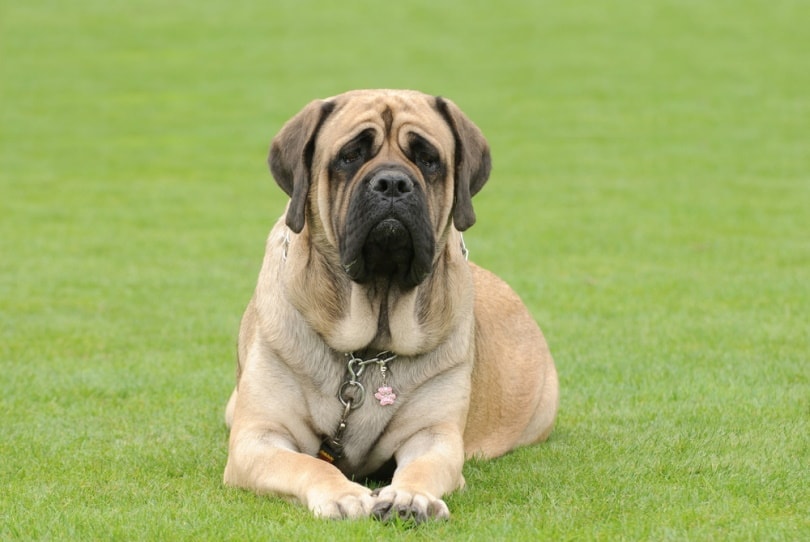
Health Conditions
Unfortunately, English Mastiffs have a shorter lifespan than many other dog breeds because of their giant size. The average Mastiff lives for somewhere between 6 and 10 years. They are also predisposed to various health conditions that prospective owners should know about. These include:
- Allergies
- Eye abnormalities
- Hip dysplasia
- Degenerative myelopathy
- Gastric dilation and volvulus
- Epilepsy
- Cancer
Suitable for:
Great Mastiffs are best suited for experienced dog owners. They require a great deal of training and a strong pack leader to follow. They are suitable for house settings, but apartments are probably too small and won’t offer enough opportunity to spend time outdoors or get indoor exercise when necessary. These dogs are usually great with kids, but they must be supervised with young ones simply because their large size may accidentally cause accidents and/or injuries.
Neapolitan Mastiff Overview

With profuse wrinkles and folds that hang off their face, the Neapolitan Mastiff is quite a remarkable sight. They have a broad head, a thick neck, and a large sturdy body, like the English Mastiff. However, they tend to be smaller in body size overall. While the English Mastiff can weigh up to about 240 pounds when fully grown, the Neapolitan Mastiff typically only grows to about 150 pounds.
Personality / Character
Neapolitan Mastiffs are fun-loving, loyal, and smart dogs that like nothing more than to please their human companions. Like English Mastiffs, these dogs tend to get along well with kids, especially when it comes to playing and goofing around. They are protective and can make good guard dogs if properly trained. Their spunky attitudes can get them into trouble indoors, though, due to accidentally knocking stuff off tables and even knocking furniture over. Plenty of exercise and playtime outdoors can help curb this rambunctiousness.
Exercise
Neapolitan Mastiffs are a bit lower in energy than English Mastiffs are, so they need less exercise. About 30 minutes of exercise daily is enough to ensure good health overall. Like the English Mastiff, care must be taken to not put too much pressure on their bodies and bones. Leisurely walks and short hikes tend to be their favorite forms of exercise. However, they won’t pass up an opportunity to play games in the yard, with or without the kids.
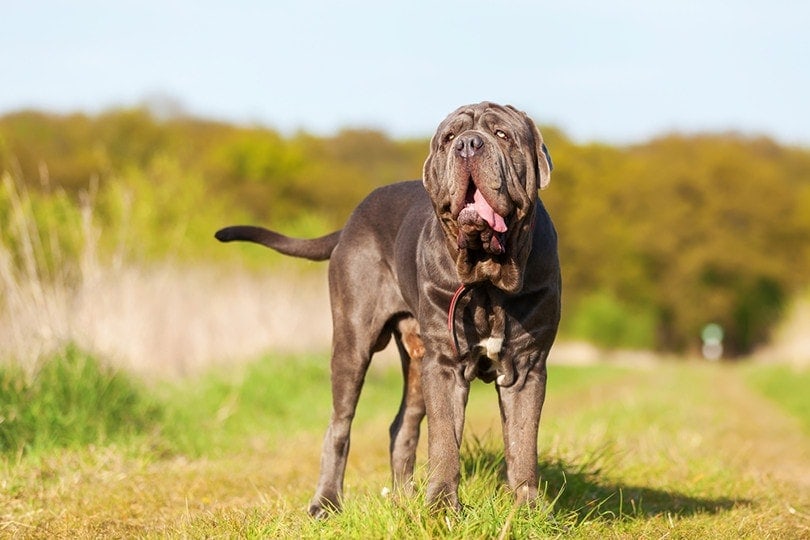
Training
These dogs must be trained as puppies to optimize obedience and ensure the safety of everyone they come into contact with. While they are not generally mean, they can be dangerous simply because of their weight and size. They can also be quite protective. Obedience training from an early age will help ensure that this breed grows up to be a well-balanced and sociable dog that is perfectly safe for everyone to be around. However, it’s always a good idea to supervise them in social settings and when young children are around.
Grooming
These dogs have short double coats, so care must be taken to minimize shedding and optimize skin health. Brushing sessions once or twice a week are usually sufficient to keep the Neapolitan Mastiff looking good, though more brushing may be necessary during the summer months. Bathing is ideal once a month or so to keep skin oils under control. Daily exercise should keep their nails in shape. Toothbrushing can be tough because these dogs tend to get stressed out about the process, so dental treats can help.
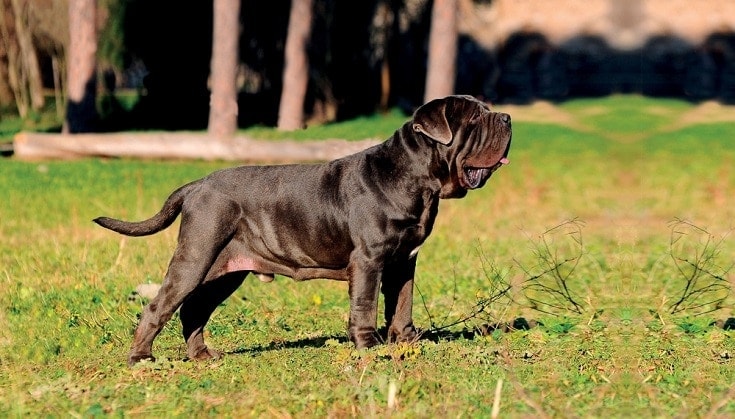
Health Conditions
Neapolitan Mastiffs have longer lifespan expectations than English Mastiffs by about 2 years, but there are still certain health conditions that they are susceptible to, depending on their genetics. Understanding these will allow owners to spot signs early and get veterinarian help when necessary. These conditions include:
- Hip and elbow dysplasia
- Entropion
- Progressive retinal atrophy
- Cardiomyopathy
- Autoimmune thyroiditis
- Gastric torsion
Suitable for:
Like the English Mastiff, this breed should be paired with an experienced dog owner who feels comfortable as a pack leader. Since they get along well with kids, Neapolitan Mastiffs are suitable for families. They would not be comfortable in an apartment setting, though, and do best in a house with a fenced yard.
Which Breed Is Right for You?
The English Mastiff and Neapolitan Mastiff are both amazing dog breeds that deserve consideration as family pets. However, these giant dogs require experienced owners and plenty of attention, so they may not be for you and your family. That said, if you are ready for the honor and responsibility, choosing one simply comes down to your family’s personal preferences.
Featured Image Credit: Left – Olga Aniven, Shutterstock | Right – VKarlov, Shutterstock



